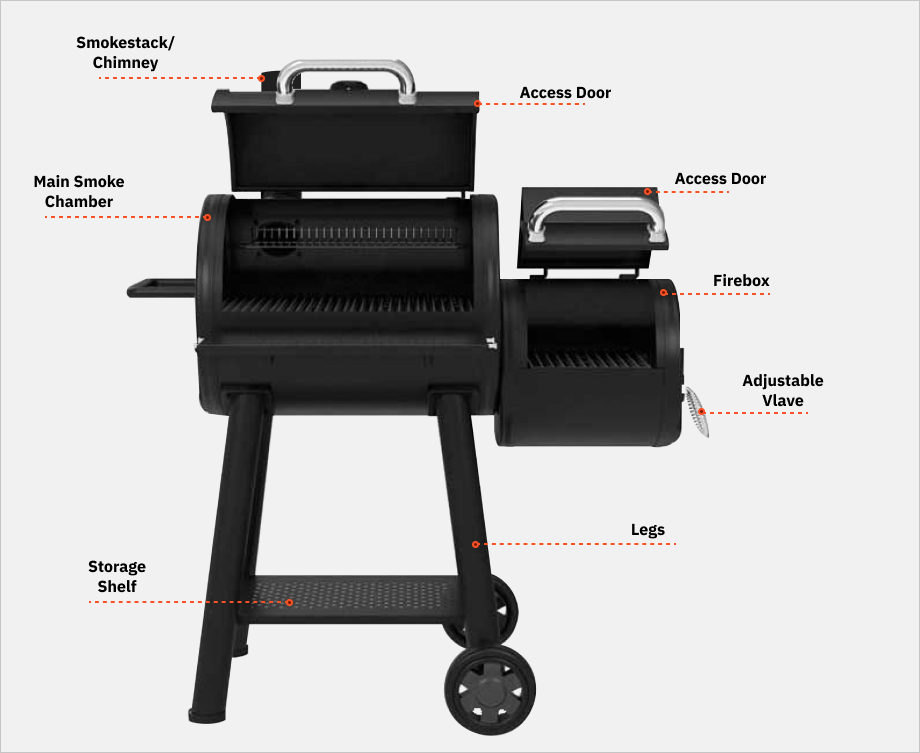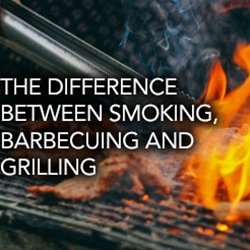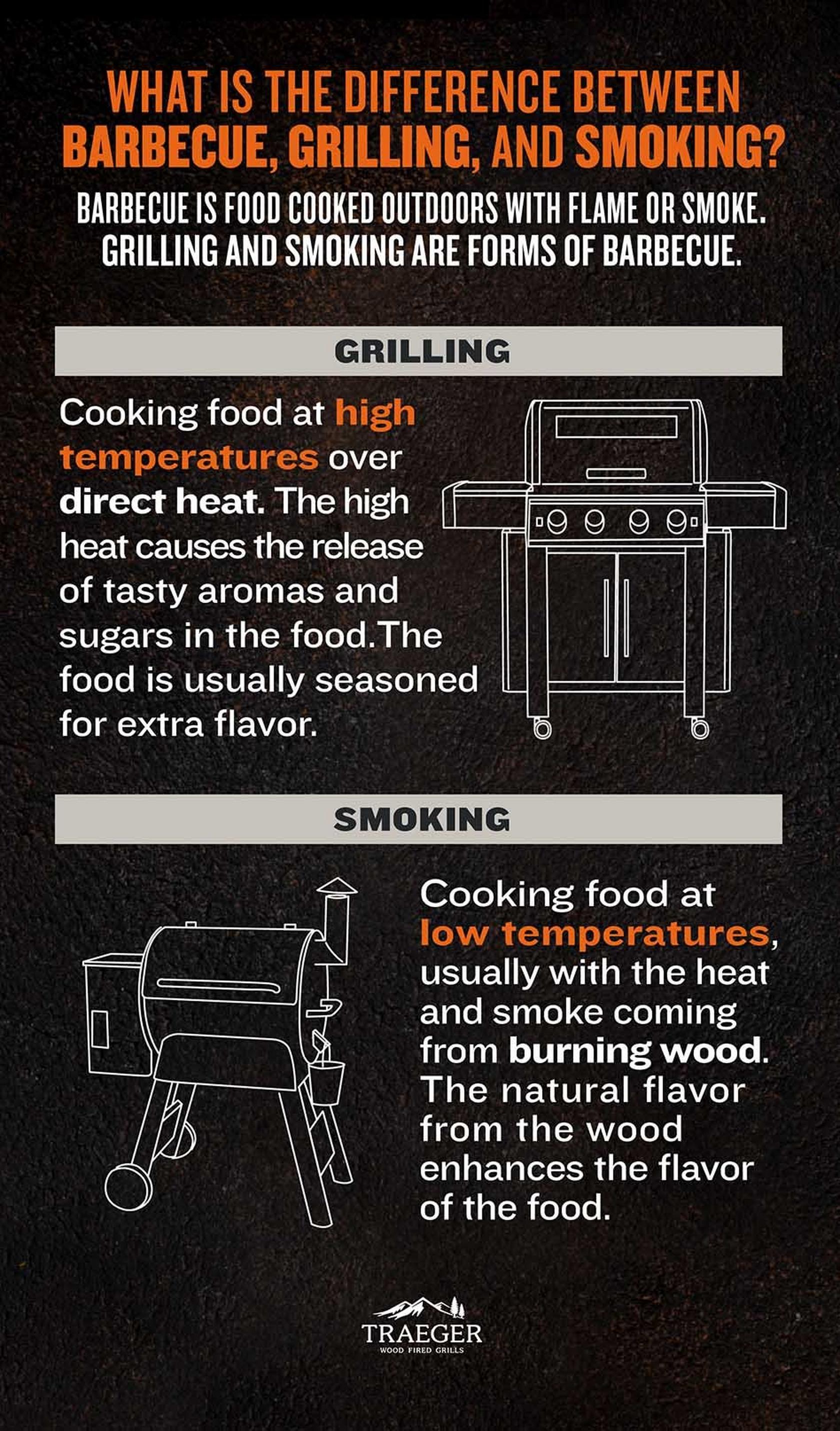Have you ever found yourself at a summer barbecue pondering the age-old question: Should we smoke or grill our meat today? Maybe you’ve stood at a party, sniffing the smoky air, wondering why some juicy ribs taste so different when smoked compared to being grilled. It’s a conversation that food enthusiasts and culinary newbies alike often stumble upon.
Both smoking and grilling create mouthwatering masterpieces, but they each have their own unique techniques and flavors. To help our taste buds embark on this smoky journey, let’s dig deeper into the world of smoking and grilling, highlighting the key differences and some handy techniques.
This image is property of cdn.media.amplience.net.
What Is Smoking?
Smoking is like that mysterious friend who always brings an unexpected thrill to gatherings. It’s all about slow-cooking food at low temperatures, usually over a wood fire or coals, which infuses it with a rich, smoky flavor. We’re essentially taking our sweet time, letting the smoke perform its magic on every fiber of the food, especially meats.
The Science of Smoking
When we smoke food, we’re mainly focusing on flavor, color, and preservation. The low and slow heat ensures the food is cooked evenly while absorbing aromatic compounds from the burning wood or coals. It’s an ancient technique with roots all the way back to when humans first harnessed fire for cooking.
Types of Smokers
There are several types of smokers we can consider, each bringing its own flair to the smoky party.
- Vertical Water Smokers: These are often beginner-friendly and great for maintaining moisture, thanks to the built-in water pan.
- Offset Smokers: For the more dedicated, these offer better temperature control and are perfect for larger barbecue adventures.
- Electric Smokers: Ideal for convenience, allowing us to focus less on the fire and more on enjoying the final product.
| Type of Smoker | Pros | Cons |
|---|---|---|
| Vertical Water | Beginner-friendly, moist cooking | Limited capacity |
| Offset | Excellent control | Needs patience and skill |
| Electric | Easy to use | May lack depth in flavor |
Smoking Techniques
Here are some commonly used smoking techniques that can help us achieve that perfect bite:
- Cold Smoking: This is more about adding flavor than cooking (think smoked cheese, salmon, or even nuts).
- Hot Smoking: This both flavors and cooks, and is what we often think of with meats like brisket or ribs.
- Smoke-Roasting: Combine closed-lid grilling with smoking for a faster cook that still delivers on flavor.
What Is Grilling?
Grilling, on the other hand, is the life of the party. It’s fast-paced and all about high heat. When we grill, we’re cooking over direct heat, which results in those delightful char marks and that savory crust on meats and vegetables alike.
The Science of Grilling
Grilling works through direct heat transfer. The Maillard reaction—responsible for the browning and flavor development—is in full swing here, giving our food that unmistakable grilled taste and texture. It’s quick, efficient, and makes a perfect choice for a weeknight dinner.
Types of Grills
Choosing the right grill can be a bit overwhelming, but here are a few common types with their highlights.
- Charcoal Grills: They offer a classic smoky taste that’s hard to beat.
- Gas Grills: Convenient and easy to control the temperature, perfect for weekday grilling.
- Electric Grills: Good for indoor use and areas with fire regulations.
| Type of Grill | Pros | Cons |
|---|---|---|
| Charcoal | Smoky flavor, high heat potential | Takes time to manage |
| Gas | Convenient, fast, and adjustable | Less smoky flavor |
| Electric | Safe for indoors | Limited heat range |
Grilling Techniques
There are key techniques that ensure our food is not just cooked, but cooked excellently.
- Direct Grilling: Perfect for quicker-cooking items like burgers, steaks, and vegetables.
- Indirect Grilling: Best for larger cuts of meat that require a bit more time, like whole chickens or pork shoulders.
- Searing: Using high heat to create a flavorful crust, then cooking the inside at a lower temperature (either direct or indirect).

This image is property of irp.cdn-website.com.
Key Differences Between Smoking and Grilling
Understanding the distinctions between these two methods can help us decide which to use for our next culinary venture.
Cooking Time
Time is a major factor. Smoking takes hours, sometimes even a whole day, depending on what we’re cooking. Grilling can often be done in a matter of minutes. If patience is a virtue, smoking lets us practice plenty of it.
Flavor Development
When smoking, the flavor is much more complex, thanks to the aromatic compounds from the wood. With grilling, we get that instant gratification—those savory, charred notes that pack a punch but dissipate faster.
Temperature Differences
Smoking usually operates low and slow, typically between 200°F to 275°F. Grilling is all about high heat, often reaching temperatures upward of 500°F.
| Aspect | Smoking | Grilling |
|---|---|---|
| Cooking Time | Hours to days | Minutes to an hour |
| Flavor Development | Deep, smoky | Charred, savory |
| Temperature | Low and slow (200–275°F) | High heat (>500°F) |
Equipment and Setup
Smokers can be more complex to set up, often requiring more space and time to get just right. Grills tend to be more straightforward, with many designs accommodating smaller patios or decks.
Versatility and Use Cases
Smoking can be more versatile when it comes to flavor infusion and is ideal for preserving food. Grilling, however, shines in its versatility for quick meals, parties, and serving a variety of recipes.

This image is property of grillio.com.
Tips and Tricks for Mastering Smoking and Grilling
To up our game, here are some tips that can serve us well:
-
Choosing the Right Wood for Smoking: Hickory, mesquite, oak, and fruit woods each impart different flavors, so experiment to find what we like best.
-
Maintaining Temperature: Invest in a good thermometer. For smoking, this helps maintain a consistent low heat, and for grilling, it helps achieve precise doneness.
-
Marinades and Rubs: They add another layer of flavor. Let’s not shy away from experimenting with spice blends and acidic marinades for both methods.
-
Resting the Meat: This applies to both grilling and smoking. A good rest allows the juices to redistribute for maximum flavor.

This image is property of spicesinc.com.
Conclusion
So, what’s it going to be? Smoking nurtures our patient side while rewarding us with a profound depth of flavor. Grilling, our quick fix, amplifies our meals with that finger-licking charred goodness. The beauty of both lies in their ability to transform simple ingredients into festival-worthy dishes. Why not invite both techniques into our culinary routine and let the fire do the talking?
By learning and practicing these key differences and techniques, we can make informed choices about which method fits the mood (and hunger level) of the moment. As we revel in the smells, tastes, and sounds of the smoking and grilling adventures, remember that gratitude is a dish best served smoky—or sizzling.




